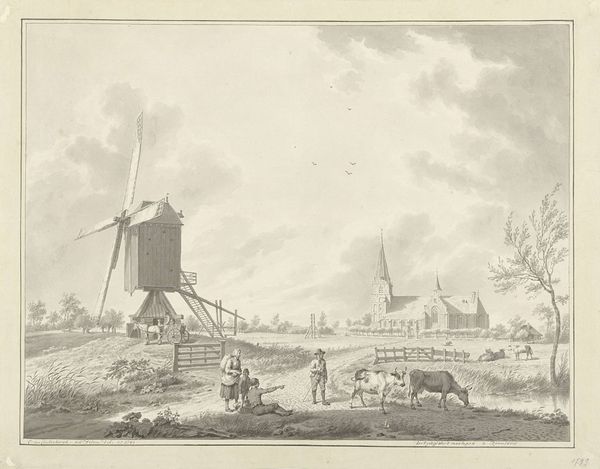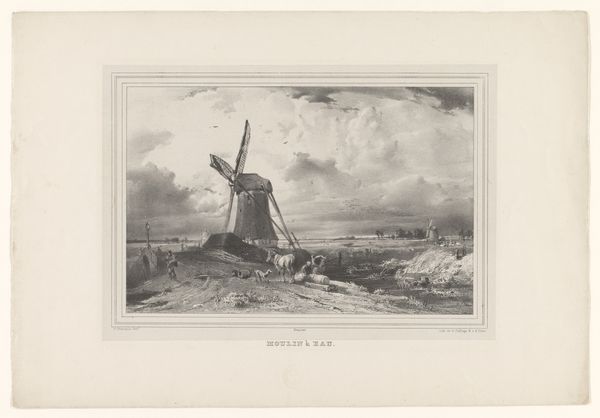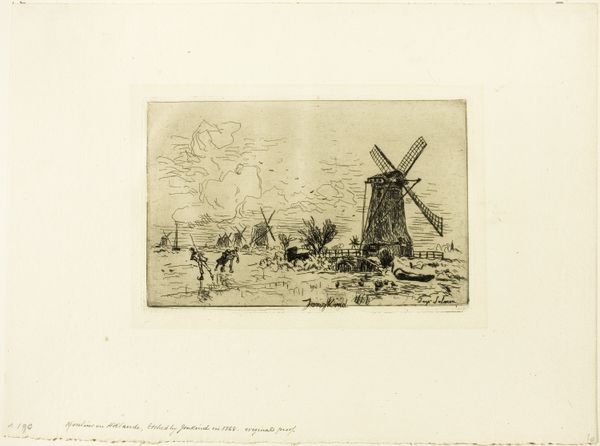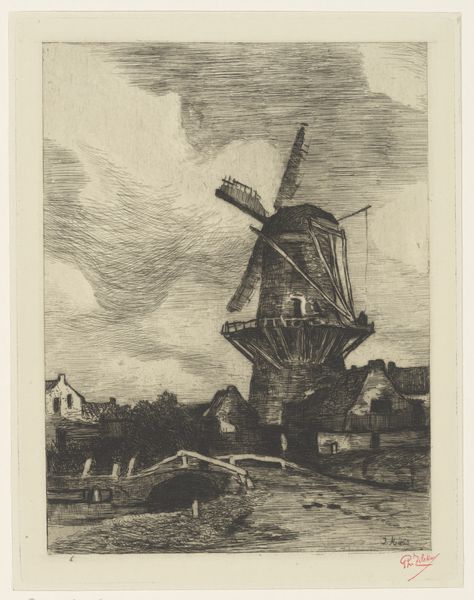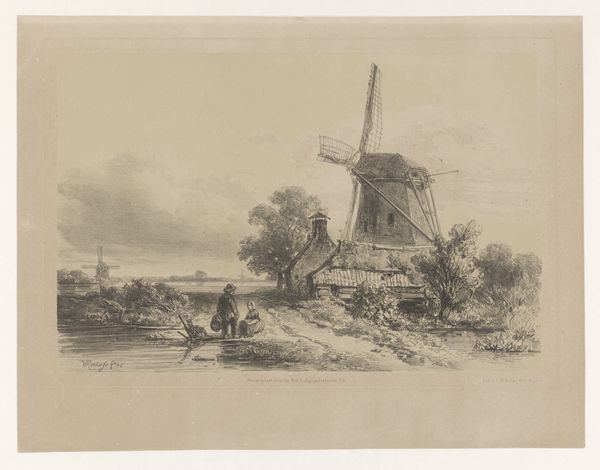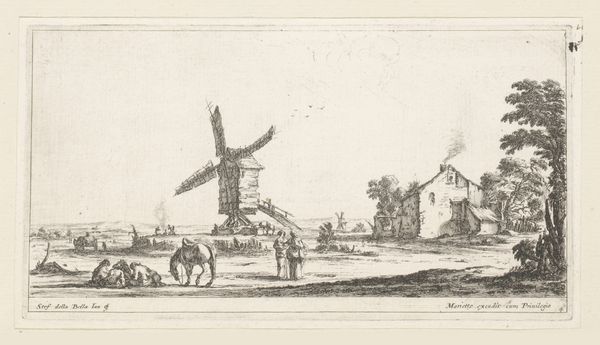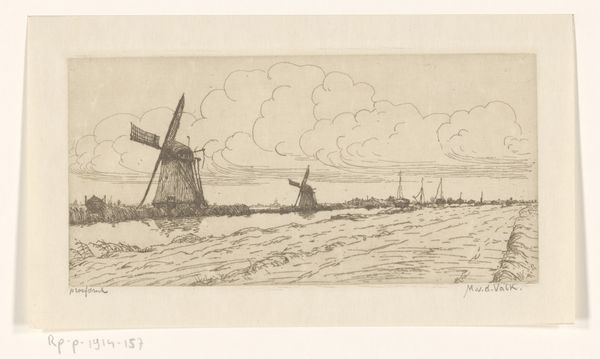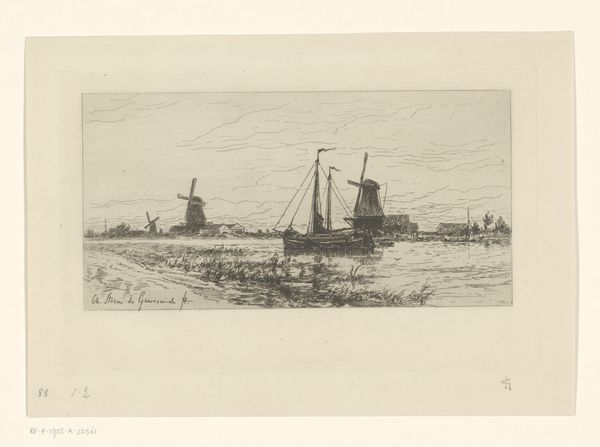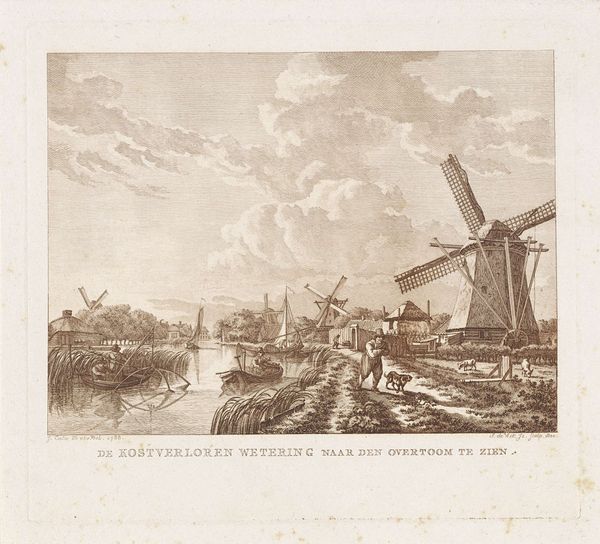
Windmill and Lock (Liber Studiorum, part VI, plate 27) 1811
0:00
0:00
drawing, print, etching, engraving
#
drawing
# print
#
etching
#
landscape
#
romanticism
#
men
#
history-painting
#
engraving
Dimensions: plate: 7 x 10 1/4 in. (17.8 x 26 cm) sheet: 8 7/16 x 11 5/8 in. (21.4 x 29.5 cm)
Copyright: Public Domain
Curator: This is J.M.W. Turner's "Windmill and Lock," an etching and engraving completed as part of his "Liber Studiorum" series in 1811. It is currently housed at the Metropolitan Museum of Art. Editor: There's such a compelling mix of tranquility and industry here. The sepia tones give it a nostalgic feel, but the figures actively working remind us of the daily grind. Curator: Absolutely. It evokes the era's reliance on wind and water power. Notice how Turner juxtaposes the windmill, a symbol of innovation, with the laborers on the ground? This placement tells us something about the distribution of work. The windmill seems divorced from daily life. Editor: Right. We have to consider who actually benefits from technological advancements, don't we? What is the labor context, here? There seems to be the man at the windmill on the one hand, and on the other, we have at least three men pulling material along the river bank or the trench next to the river and cows on the other bank grazing peacefully. Curator: Precisely. Beyond the immediate scene, the Industrial Revolution impacted social dynamics. Rural populations migrated to urban centers in search of employment in mills, factories, and other manufacturing centers. The division of labor became more prominent, affecting people's perceptions of identity, class, and community. Editor: And speaking of production, the very process of etching and engraving to create the final image for prints—to disseminate them widely–that must have been incredibly laborious in itself. It seems appropriate. Curator: Indeed. What appears on paper is layered in process as well as socio-economic realities. This is what makes a landscape like this more than just a pleasing image. Editor: It’s an environment wrought with production, class dynamics, and the coming of a new age in England. This view really puts the viewer in the material. Curator: A powerful reminder to look beneath the surface, beyond aesthetics. The means of production and its historical context informs so much about the artistic statement. Editor: Yes, examining both Turner’s materials and process and the economic picture gives us a wider picture of a specific historical time.
Comments
No comments
Be the first to comment and join the conversation on the ultimate creative platform.
